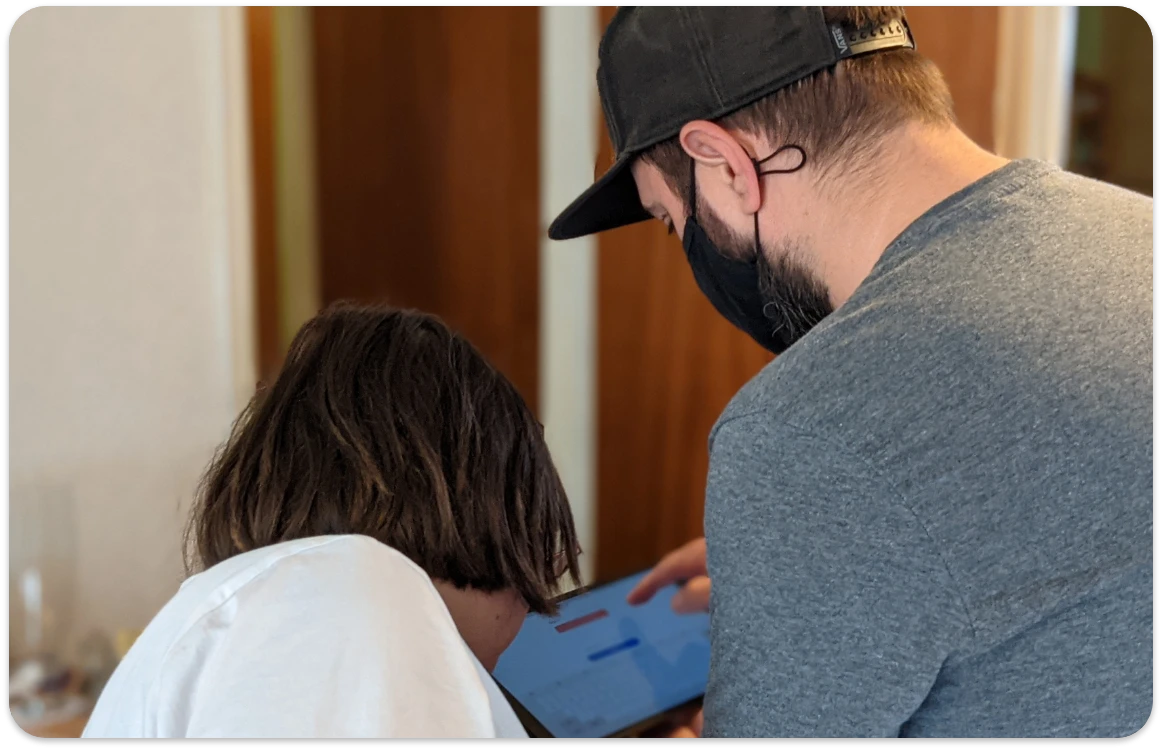
Smart housing
Innovate Trust developed the first supported living Smart house in the UK, using mainstream and open source technologies. Our Smart housing projects have led to pioneering homes for supported people, through an innovative and collaborative working approach with partners and professionals.
About the project
Innovate Trust believes that everyone deserves to live a comfortable and independent life. Our digital team have developed a range of smart homes for adults with disabilities in partnership with housing associations and local authorities, designed to make everyday life easier and more manageable.
The smart houses are equipped with the latest mainstream technology and voice assistants, allowing residents to control aspects of their home with ease. From adjusting the lighting and temperature to controlling entertainment systems, everything can be done with simple voice commands.
We understand the importance of feeling at home, and want to ensure that homes are designed to provide just that. We are committed to ensuring that all our supported people have the best quality of life possible.
Our goal is to make a difference in the lives of adults with disabilities, and we believe that our smart housing projects are a step in the right direction. If you’re interested in learning more or working in collaboration, please don’t hesitate to get in touch with our digital team.
What is a Smart House?
A smart house is a home that uses technology to automate and control various devices and appliances, such as thermostats, lights, plugs, switches, doorbells, locks, cameras, and sensors. You can remotely access and monitor your smart house from anywhere with an internet connection or use voice assistants to interact with your smart devices using natural language commands. A smart house can make your life easier, more convenient, and more comfortable by allowing you to customize your home according to your needs and preferences.
What technologies do we use?
We use a variety of smart home technologies that can enhance the accessibility and independence of adults with disabilities. We use mainstream technology. Some of the technology we use includes:
- Smart Speaker Assistants
- Smart plugs and switches
- Smart lighting
- Smart appliances
- Smart thermostats
- Smart doorbells and locks
- Smart cameras
- IoT sensors
These are just some of the many smart devices that we use in our smart houses for adults with disabilities. We also use voice-activated products from Amazon or Google to connect and control these devices using natural language commands.
We always make sure that the devices we use are compatible with each other and meet the needs and preferences of the people we are supporting. We also provide support and guidance on how to use and maintain these devices effectively.
What are the key benefits of a Smart home?
A smart home can provide many benefits for adults with a disability, such as:
Accessibility:
A smart home can make your home more accessible and adaptable to your needs and preferences. You can use voice assistants, smartphones, or other devices to control your smart devices using natural language commands. You can also customize your smart devices to suit your abilities and preferences. For example, you can adjust the brightness, colour, or mood of your lighting, the temperature of your thermostat, or the volume of your speakers.
Independence:
A smart home can help you perform daily tasks and activities more easily and independently. You can use smart devices to automate your routines, such as turning on the lights, adjusting the thermostat, or locking the door. You can also use smart devices to monitor and manage your health, fitness, or medication. For example, you can use a smart speaker voice assistant to communicate with family and friends, control your home environment and to listen to music.
Security:
A smart home can enhance the security and safety of your home and yourself. You can use smart devices to protect your home from intruders, fire, water leaks, or other hazards. You can also use smart devices to alert you or your caregivers of any emergencies or incidents that may occur in your home. For example, you can use smart doorbells, locks, cameras, or sensors to see who is at your door, communicate with them, grant them access, or deter them from entering. You can also use smart smoke detectors, water leak detectors, or panic buttons to notify you or your caregivers of any potential dangers or accidents.
These are just some of the key benefits of a smart home. There are endless possibilities and we work with the people we support to find the right smart technology that best suits them.




